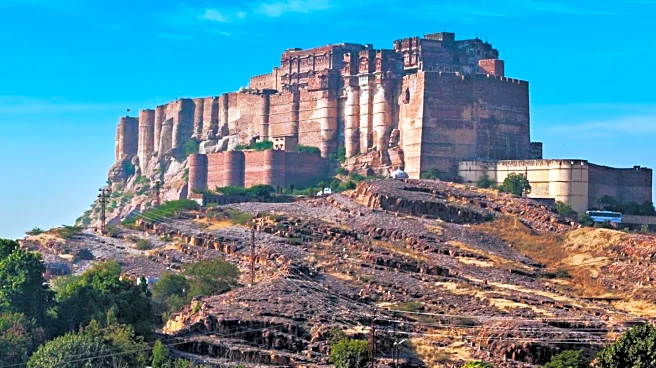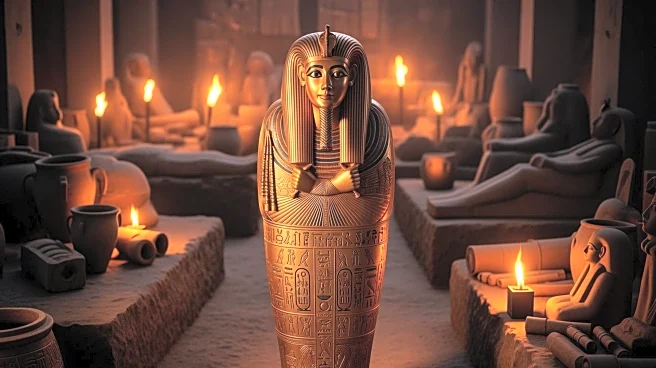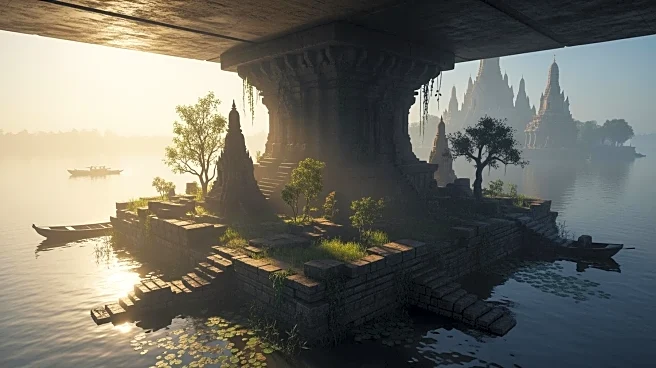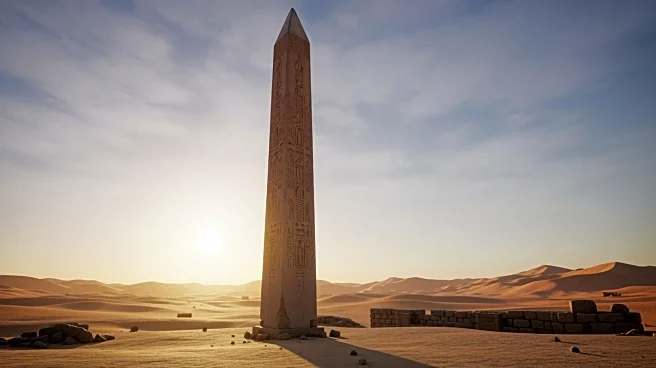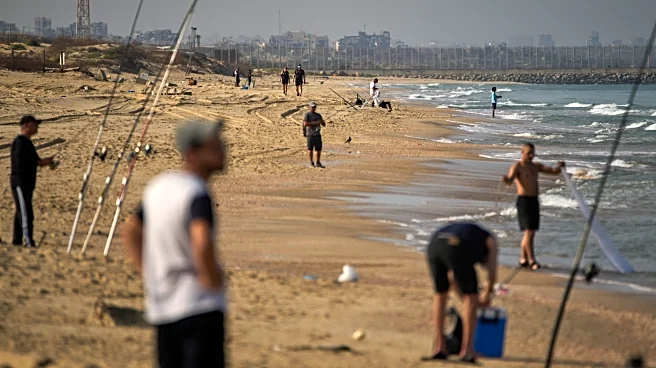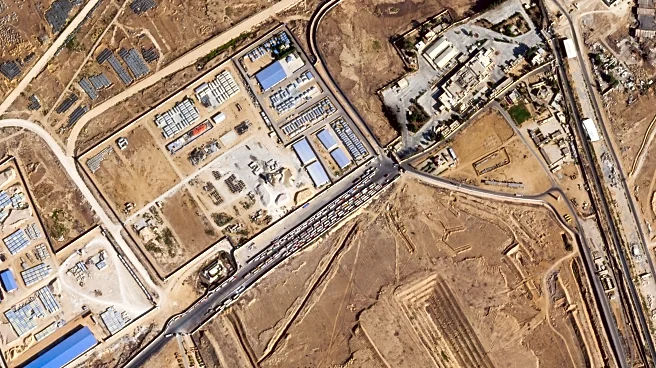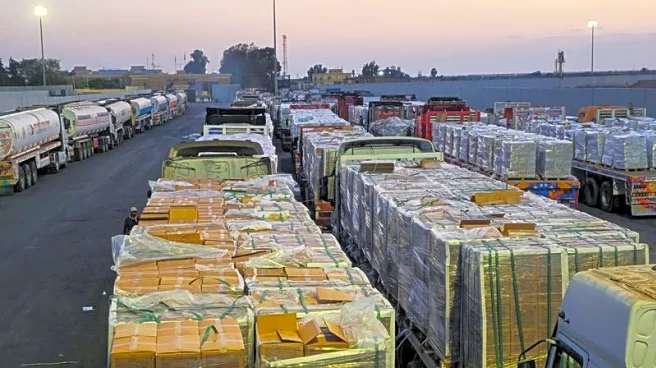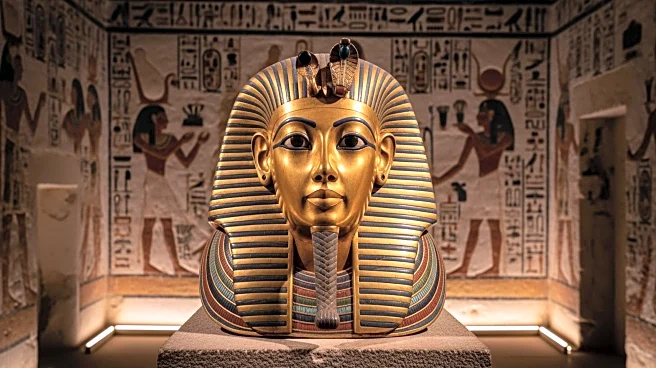What is the story about?
What's Happening?
A team of archaeologists has uncovered a significant ancient fortress from Egypt's New Kingdom period at Tell El-Kharouba in North Sinai. This discovery, made in collaboration with Egypt's Ministry of Tourism and Antiquities, highlights the fortress's role in Egypt's defense systems along the 'Way of Horus' trade route. The fortress, located near the Gaza Strip, was part of a network of military and commercial outposts that protected Egypt's eastern borders. The site features a well-preserved southern wall, defensive towers, and a barracks area, providing insights into military strategies and daily life during the New Kingdom era.
Why It's Important?
The discovery of the fortress at Tell El-Kharouba offers valuable insights into ancient Egyptian military architecture and strategies. It underscores the importance of the 'Way of Horus' trade route in maintaining Egypt's political and military influence over surrounding regions. The fortress's strategic location and its connection to a military port illustrate the integration of land and naval defense systems, highlighting Egypt's sophisticated approach to securing its borders. This finding enriches our understanding of Egypt's historical military prowess and its role in regional geopolitics during the New Kingdom period.
What's Next?
Further excavations at Tell El-Kharouba are planned to explore the adjacent military port, which is believed to have supported the fortress. This port would have been crucial for controlling access to the Mediterranean and facilitating trade and military movements. Archaeologists aim to uncover more details about the maritime outpost's function and its relationship with the fortress, potentially revealing additional aspects of ancient Egyptian warfare and trade logistics.
Beyond the Headlines
The fortress's architectural evolution, particularly the redesigns of its southern entrance, reflects changes in defensive strategies over time. These modifications indicate the adaptability of ancient Egyptian military planning in response to various internal and external challenges. The discovery also provides a glimpse into the daily lives of soldiers stationed at the fortress, with artifacts such as pottery fragments and remnants of food production offering a more intimate understanding of their existence.
AI Generated Content
Do you find this article useful?
